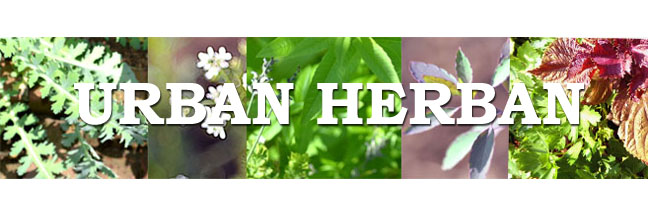It is fast approaching---the height of the harvest season. Mid-Summer to fall)
As fall comes, plants have less sunlight, even though it is still warm outside.
The herbs themselves have less volatile oil: that ingredient that contains the flavor and smell. So you need to harvest NOW!
It's part of the plant cycle: as less sunlight is part of the equation, the fruit and seeds and flowers march towards winter.
This is time to plan for the late herbs such as thyme, and get what you can from those past their prime.
Basil was probably at its prime in late July. But use it for pesto and you can have the early autumn fruits of the field. Just remember that you don't have much time; basil will go fast. When the leaves are largely yellow, you might as well grind or chop them very fine---- use them for stews or sauces, and even then, with not as much flavor. But in the winter it will be very welcome.
Other herbs, such as thyme, can be deferred in harvesting, till early fall. Although wonderful when fresh (what isn't?), it can be dried and used in delicious meat glazes, such as Honey Thyme Meat Glaze.
Take a look around the garden---see the lemon verbena? It's a great time to snip a twig or two and start them for next year. Bring the whole plant indoors, and leave a bit of room---over time, it will grow to 5 feet tall.
Here are my (condensed ) notes for harvesting when there is little time:
Methods to Use in Harvesting Herbs
Herbs are best when fresh---or so it is said. But given today’s budget crunch (winter time fresh herbs cost about $3.00 for a small amount), putting aside some for yourself is wise.
When do you harvest?
Generally, that is “ in the morning, before the flower emerges, and prior to the loss of flavor oils.” A number of herbs differ---check a harvesting chart (see Rodale’s Illustrated Encyclopedia of Herbs, Teaneck Library)
What do you do with the herbs?
First, think of the herbs you use the most and what you do with them Then you can decide on a preservation method. Know which herbs can be preserved---and which cannot. Shiso and Salad Burnet cannot be preserved---use while in your garden!
Decide how much space you can allocate to storage and what method you will use per herb.
What Methods Fit Your Situation?
-"Dry" can involve drying racks (a laundry rack will serve) and paper bags (to catch seeds).
---Use rubber bands to take into account the drying herb to tie and hang the herbs (water drying makes for a smaller stem). Use screens to ensure all sections of small herbs are dry so mold does not set in.
--- Crumbling the herbs is the next step. Then, store them in amber bottles and place in a dark, dry place.
--Freezing herbs can involve freezing the whole herb in plastic bags, or chopped herbs in ice cube trays with oil or water. How much can your fridge---or freezer----hold? They may be mushy on defrosting, but will be perfect for a sauce or stew.
--Microwave: Put herbs on a paper towel after washing the herbs and dry them thoroughly .Use a low setting. Good for any dish that has dried herbs as an ingredient, and they are “fresher” than those you buy!
--Preserve in vinegar or oil with a freshly washed and thoroughly dried herb. This method is best for salad dressings, marinades, vegetables in a vinaigrette, or cooking with a flavored oil.
Be very careful to refrigerate oil with herbs---and remove the herb from the oil shortly thereafter. Do not let the herb stick up from the oil, avoid food poisoning. Herbs in vinegar are different--the vinegar will pickle the herb,





















